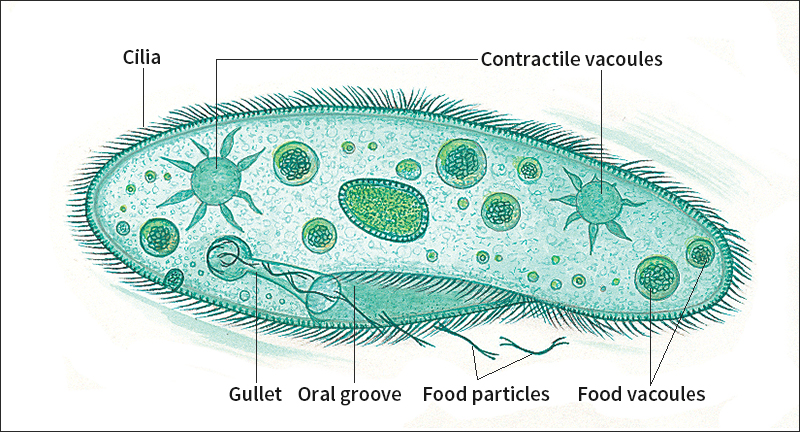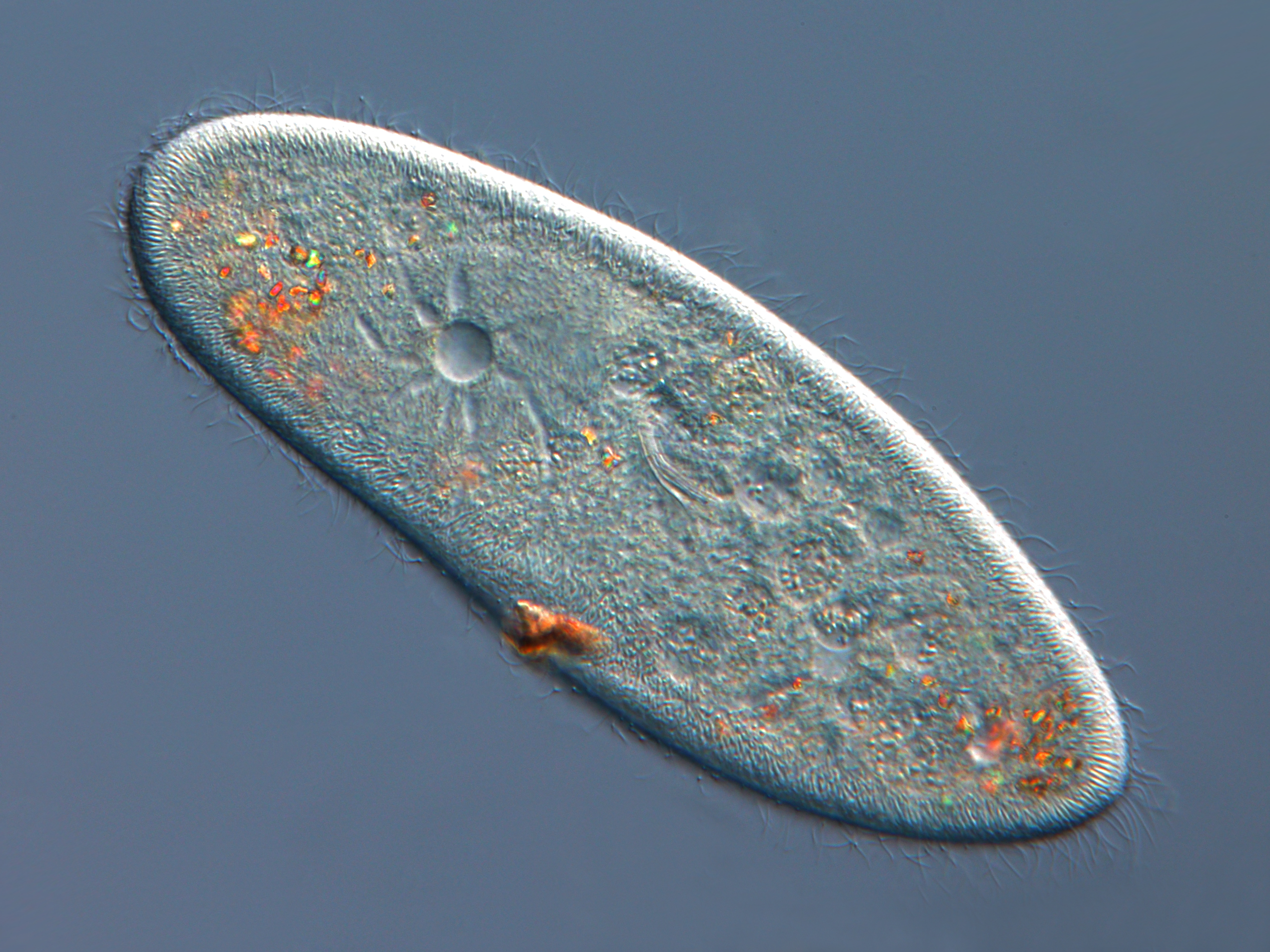Paramecium, << `par` uh MEE shee uhm or `par` uh MEE see uhm, >> is a tiny single-celled organism that can hardly be seen without a microscope. Paramecia live in ponds and slow-moving streams. There, they feed on bacteria, helping to keep the water clean.

The paramecium is a type of living thing called a protozoan. It is often compared to the ameba, another protozoan. The outer surface of both organisms is called a membrane. This membrane is flexible in ameba but stiff in paramecia. As a result, the paramecium has a permanent shape, resembling the bottom of a shoe. The inside of the paramecium is made up of watery material called cytoplasm. The cytoplasm contains tiny structures, including one large nucleus and at least one smaller nucleus.

The paramecium is covered with fine hairs called cilia. It swims by beating its cilia. A network of fibers connects the cilia and helps them work together.
Special cilia push food through a hollow in one side of the paramecium called the oral groove. The oral groove leads to a tube called the gullet. Food in the gullet forms a ball which passes into the cytoplasm as a food vacuole. The food is digested as the vacuole passes through the paramecium. Waste is passed out through the anal pore.
Two round sacs that seem to appear and disappear in the paramecium are called contractile vacuoles. These vacuoles have a star-shaped appearance when they contract, pushing water out of the cell.
Paramecia may reproduce by dividing in two across the middle. Paramecia also engage in sexual reproduction. Two individuals may come together and exchange their nuclei. This process is called conjugation. After conjugation, the paramecia separate and divide several times.
The paramecium shows an avoidance behavior. If it comes in contact with an unpleasant stimulus, it reverses the movement of its cilia and backs up.
